satellite
Latest

A fleet of sensor-packed balloons will hit the stratosphere this summer
World View wants to occupy the sky. Its sensor-packed balloons sit in the stratosphere, taking in data and imaging the ground. The company completed test flights to tweak flight and navigation issues, and is now ready for its balloons to operate in the stratosphere on a long-term basis. A preliminary fleet of Stratolites -- equipped with various sensors -- will be released over North and Central America this summer, helping scientists, meteorologists and governments to gather data that is more accurate than that of typical satellites.

FCC votes to auction C-band satellite spectrum for 5G use
FCC chairman Ajit Pai has been pressing for an auction of "mid-band" wireless spectrum that could be useful for expanding the reach of 5G, and on Friday the commission voted to approve rules for just such a redistribution. The rules cover "C-Band" spectrum that satellite companies like Intelsat, SES SA and Telesat are currently using, and include payment incentives for those companies to speed plans to shift operations away from those frequencies by dates in 2021 and 2023. Otherwise, the spectrum will need to be freed up no later than December 5th, 2025. Those payments could add up to $9.7 billion, and dissenting FCC commissioners argued that there wasn't enough consideration on how much they should be or how funds from the auction should be distributed, and that the FCC was misusing its powers under the law. Jessica Rosenworcel said in a statement (PDF) that, "We could start a fund a new initiative to help with rural broadband. We could fund the nation's transition to next-generation 911, which is sorely needed and would benefit public safety in every state. Or we could use some of the revenues to seed a Homework Gap Trust Fund to help our nation's students stuck in the digital divide. It could support WiFi hotspots for loan in every school library—and virtually eliminate the Homework Gap overnight."

Iran says it will launch an observation satellite 'in the coming days'
Iran is set to become the latest country to launch an observation satellite, according to the country's national space agency. The satellite, named Zafar (which means victory in Farsi), began development three years ago. It will be launched by a Simorgh rocket 329 miles above the Earth, and will make 15 orbits daily, collecting imagery to help with the study of natural disasters and agriculture.

MIT's new GPS system uses satellite images to put you in the right lane
If you've ever used GPS navigation while driving in an unfamiliar place, chances are you've had more than one incident with last minute merging -- likely because the GPS hasn't picked up on the number of lanes on the road, or where they lead to. But this particular annoyance's days could be numbered, thanks to research from MIT.

DirecTV satellite is at risk of explosion due to battery issues
DirecTV has one month to remove a satellite from geostationary orbit, so it doesn't take other satellites down with it if it ends up exploding. The AT&T-owned TV service fears that its Spaceway-1 satellite (a Boeing 702HP model) might explode due to battery issues that started manifesting in December. According to SpaceNews, DirecTV explained in an FCC filing dated January 19th that an anomaly caused "significant and irreversible thermal damage" to the satellite's batteries.

China's alternative to GPS should be complete by mid-2020
China's competitor to GPS is nearly finished after years of work. Project lead Ren Chengqi has revealed that the Beidou Navigation Satellite System's core was completed earlier in December, and that the last two satellites should reach orbit "before 2020." This will technically be the third phase of Baidou, which first rolled out in 2000, but it represents the culmination of the satellite system. in its present form. You won't see a major upgrade until 2035, Ran said.

Apple is reportedly working on using satellites to send data to its devices
It's something of a long shot, but the iPhone could one day connect to its own satellite network. According to Bloomberg's Mark Gurman, Apple has a "secret team" working on new satellite and wireless data technologies. This group consists of "about a dozen" software and hardware engineers who specialize in aerospace, satellite and antenna design, as well as a number of executives from those same fields. In particular, the team is led by two former Google executives who worked at a satellite observation startup called Skybox Imaging before it was acquired by the search giant in 2014 for $500 million.

FCC chairman wants public auction to repurpose satellite bands for 5G
The FCC's ongoing 5G push might set up a conflict with the satellite industry. Chairman Ajit Pai is pressing for a public auction of wireless frequencies in the C-band spectrum (the 4GHz to 8GHz range often used by satellite companies) for the sake of 5G service. This would help the FCC clear up "significant" frequency space in a quick fashion, generate money for the government and "ensure continued delivery" of existing services, Pai argued. He hoped to auction off a 280MHz slice while leaving the upper 200MHz available.
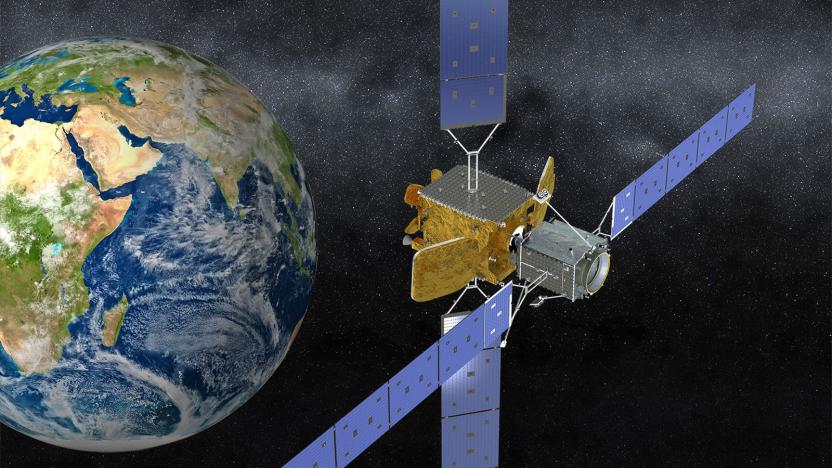
Northrop's satellite life extension spacecraft launches on October 9th (updated)
Space junk is hard to completely avoid when satellites can only last so long, but that might not be a problem for much longer. Northrop Grumman and NASA are launching a "first-of-its-kind" service vessel, the Mission Extension Vehicle, aboard a Russian rocket on October 9th. The inaugural MEV-1 will dock with an Intelsat satellite in three months' time and provide life-extending services over five years. After that, it should be free to help other satellites -- it'll still have 10 years' worth of use after that.

AT&T reportedly considers offloading its DirecTV satellite unit
AT&T made much ado of its $48.5 billion acquisition of DirecTV, but it's apparently having second thoughts just a few years later. Wall Street Journal sources claim the telecom is considering "parting" the DirecTV satellite unit through a number of means, including a spinoff as a separate public company or even a merger of its assets with rival provider Dish. There's no guarantee anything will happen, the WSJ said, but the mere act of considering a split is notable.
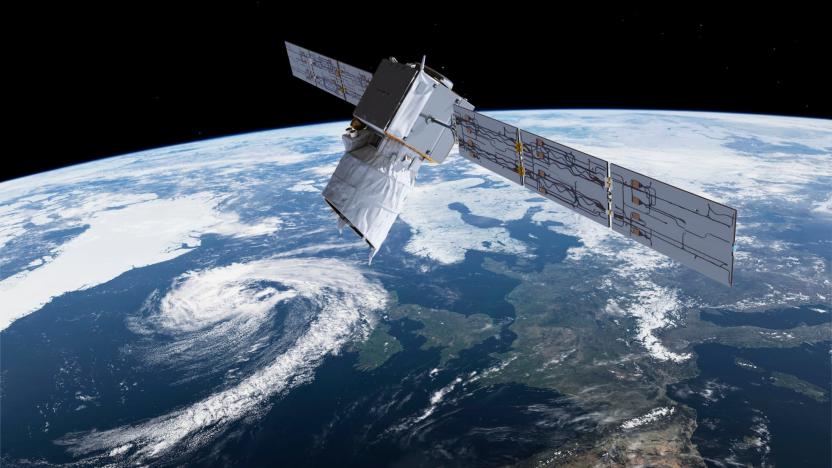
SpaceX wouldn't move its satellite despite collision warning, ESA claims (updated)
There's a high-stakes traffic issue in the space around our planet. The European Space Agency's Aeolus Earth observation satellite had to perform a maneuver to prevent collision with SpaceX's Starlink satellite 44.

NASA selects proposals for smallsats built to study deep space
NASA is expanding plans to use small satellites (aka smallsats) to explore the Solar System. The agency has picked two proposals for smallsat technology that would improve observations in deep space, where they could help improve models that predict space weather. One, Science-Enabling Technologies for Heliophysics (SETH), would demo both optical communications as well as a detector that can spot fast-moving chargeless atoms emanating from the Sun. Solar Cruiser, meanwhile, would include both a giant 18,000 square foot solar sail as well as a coronagraph that could study both the Sun's magnetic field as well as the velocity of coronal mass ejections.
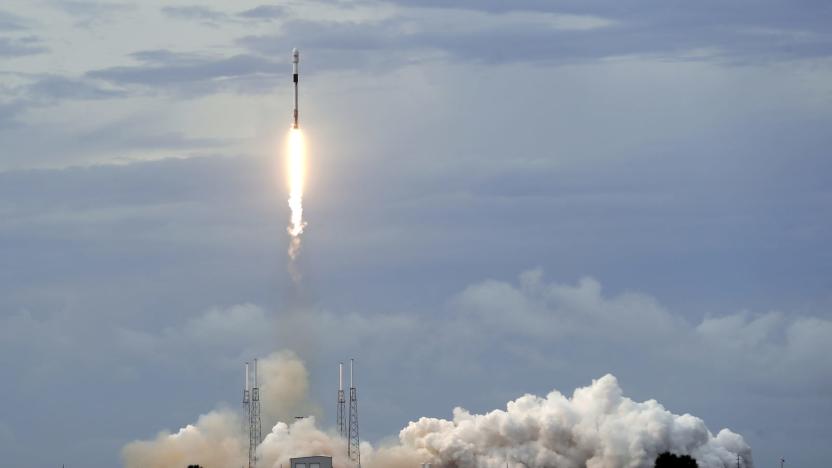
Watch SpaceX catch a piece of its rocket as it falls from space
Yesterday, SpaceX successfully launched a Falcon 9 rocket from Cape Canaveral. This was the third flight for this particular Falcon 9, and its mission was to carry the AMOS-17 satellite for Spacecom. While you can watch the full launch stream here, one of the most exciting parts of yesterday's event came as a tweet from Elon Musk. He shared a quick video of a SpaceX ship catching the rocket's fairing in a net as it fell from space.
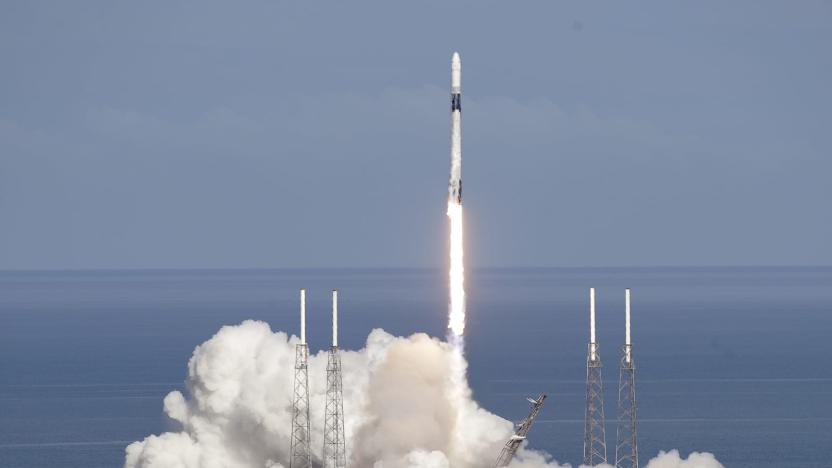
SpaceX 'rideshare' program launches satellites for just $2.5 million
For space tech startups and other small companies doing research, one of the biggest hurdles is actually getting to space. SpaceX is looking to change that. Today, it announced a SmallSat Rideshare Program, which will allow small satellite operators to book a spot on regularly scheduled Falcon 9 launches.

Canada invests $85 million in internet satellites for rural areas
Telesat, the Canadian telecom and SpaceX internet competitor, wants to connect remote regions with its low-earth-orbit satellites. Now, it appears to have the backing of Her Majesty's Government. The company announced today that it is partnering with the Canadian government to expand high-speed internet access to rural areas. Over the next decade, the government will contribute $600 million in Canadian dollars towards the telecom's upcoming fleet of satellites. An additional $85 million of funding will be used to create 500 new jobs, invest in R&D and promote STEM education.

Amazon asks FCC for permission to launch internet satellites
Amazon is moving fairly quickly on its plan to deploy thousands of internet satellites. The company has filed for FCC permission to launch 3,236 satellites as part of Project Kuiper. The spacecraft would be grouped into 98 orbital planes, and fly at altitudes between 366 and 391 miles. The filing reiterated Amazon's plans to connect "tens of millions" of people around the world, although the company warned that it couldn't cover everything -- it asked for a waiver on a requirement to serve the whole US as its satellites wouldn't cover parts of Alaska.
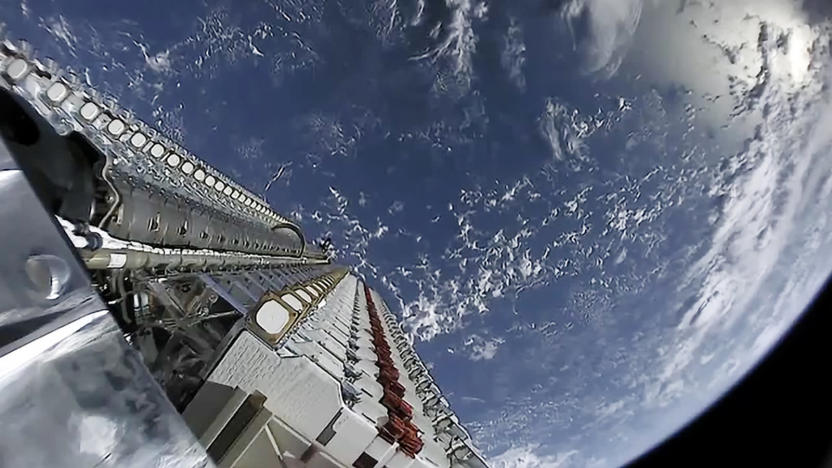
SpaceX is still in control of all but three of its internet satellites
How are SpaceX's Starlink internet satellites faring roughly a month after launch? Quite well, if you ask SpaceX. The company reported that it's in contact with 57 of the 60 initial broadband satellites. Although it's not certain what happened to those three faulty satellites, they'll eventually fall to Earth as gravity drags them down.

Decades of spy satellite images help track melting Himalayan glaciers
You don't need cutting-edge satellite data to make sense of Earth's changing climate. Researchers have published a study of melting Himalayan glaciers that takes advantage of 40 years' worth of satellite imagery posted by the US Geological Survey, including declassified KH-9 Hexagon spy satellite photos from the 1970s and 1980s. The info not only let researchers cover a vast territory (about 650 glaciers over 1,240 miles), but made it possible to automatically create 3D models that reflected declining glacier elevations.

American Airlines offers satellite WiFi to its entire mainline fleet
If you're relying on American Airlines for a summer trip, there's a good chance you'll have internet access most of the way. The company has finished deploying satellite-based internet access to the fleet of 700-plus narrowbody aircraft that mainly handle its domestic routes. Depending on where you're going, you'll have either Gogo 2Ku or ViaSat Ka connections providing speedier, more consistent WiFi than the ground solutions of old. American deployed satellite broadband to its widebody aircraft roughly a year earlier.
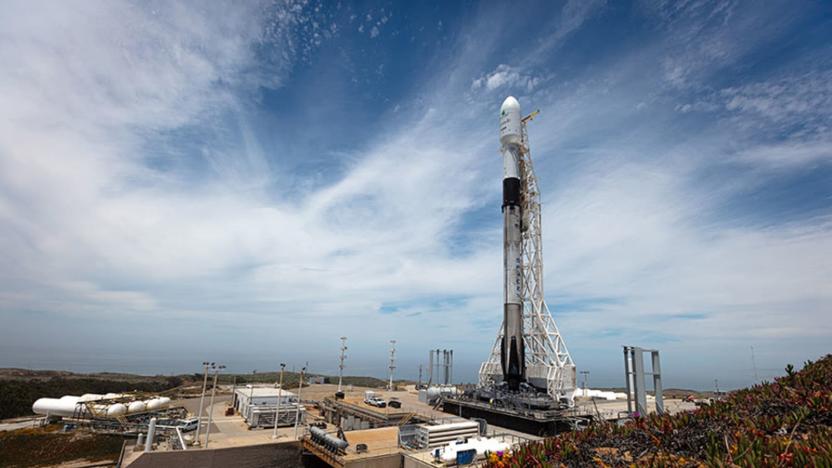
Watch SpaceX launch Earth observation satellites at 10:17AM ET
SpaceX is about to get your morning started in dramatic fashion (if you're in the Americas, that is). The private spaceflight outfit plans to launch Canada's RADARSAT Constellation Mission as soon as 10:17AM Eastern, with the satellites deploying in earnest 54 minutes after blastoff. The company is using the same Falcon 9 first stage that put the Crew Dragon demonstration mission into orbit back in March, and it expects to land the rocket at Vandenberg Air Force Base.








